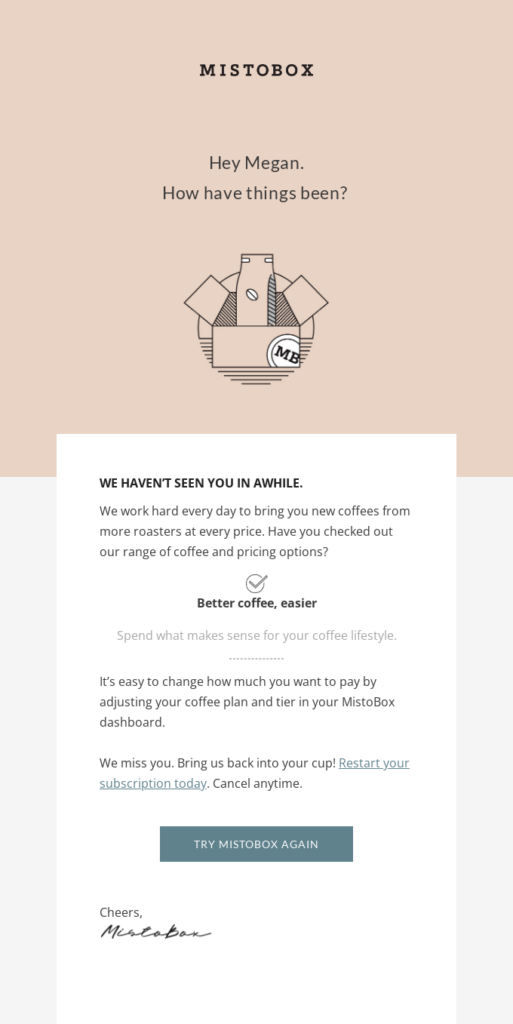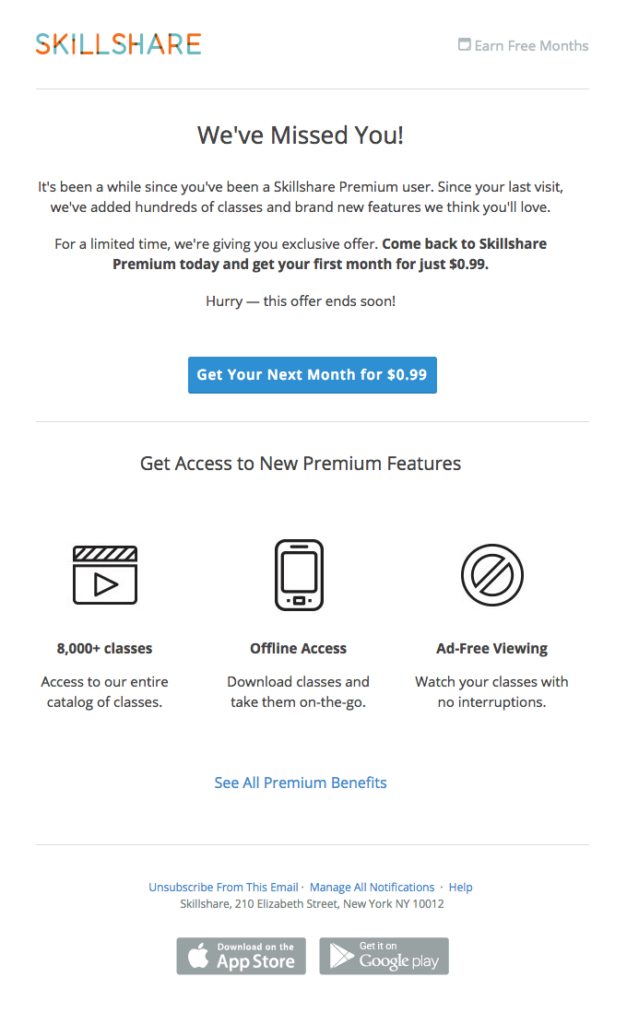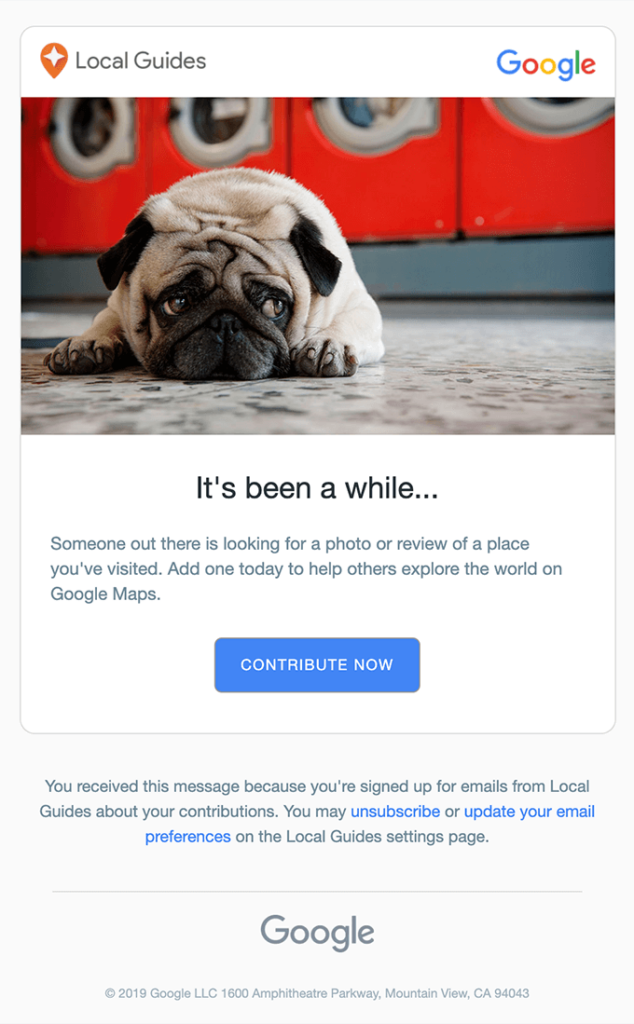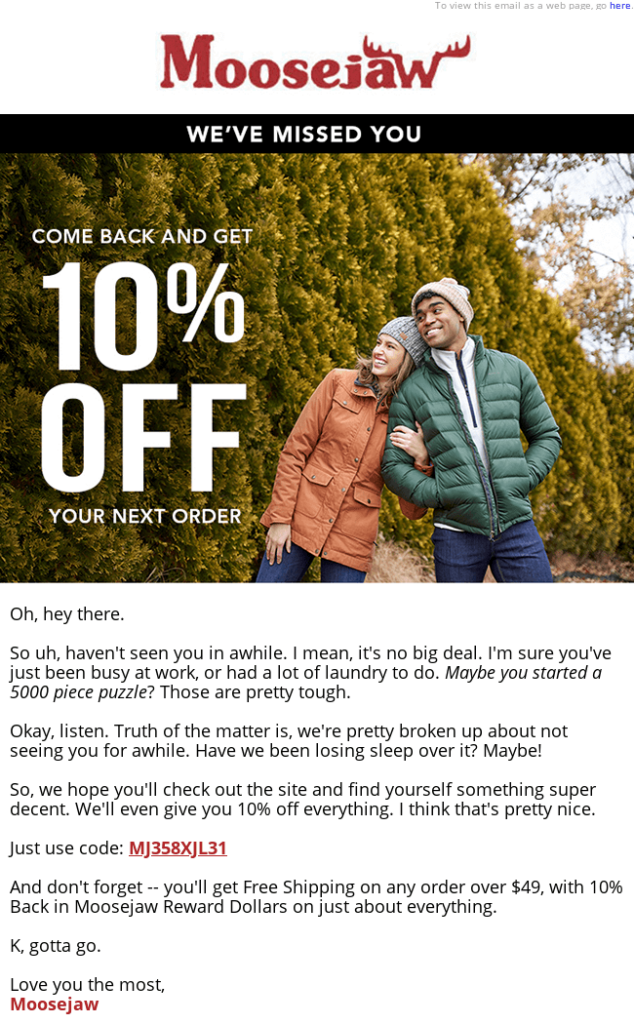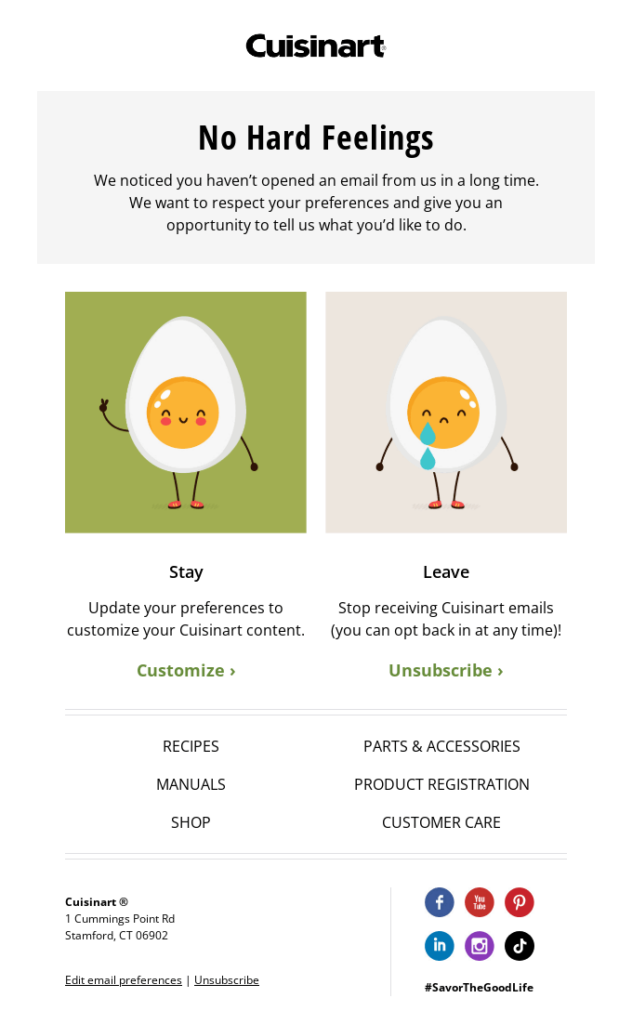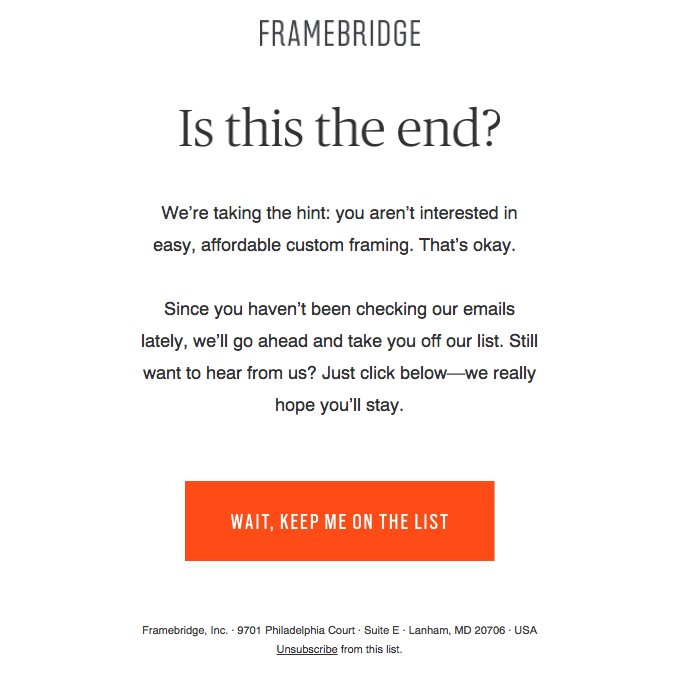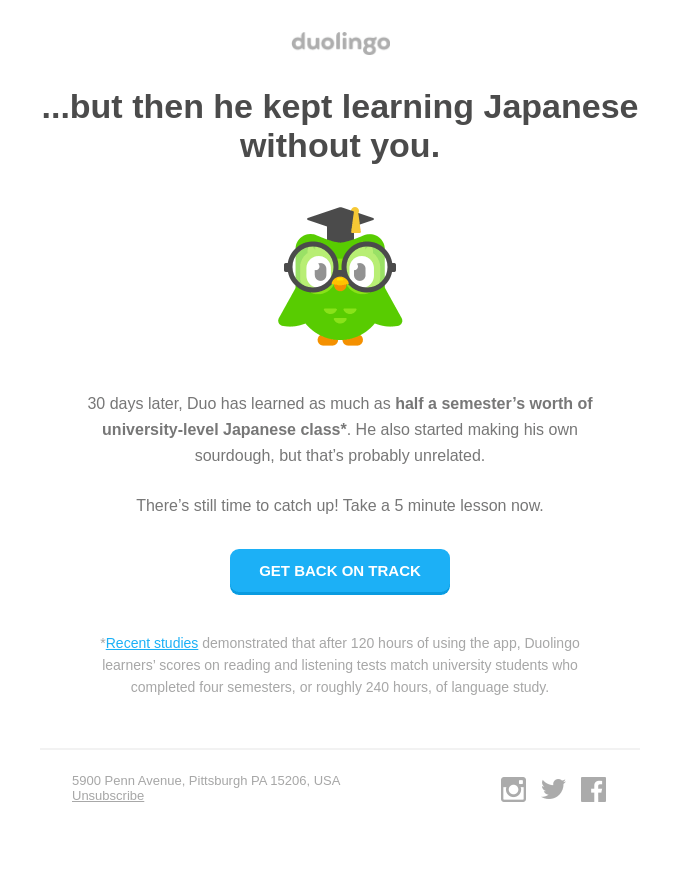Reactivation Emails: 9 Best Practices & 5 Subject Line Tips
Nobody likes to be ignored, including businesses. Though no matter how much time and sweat you pour into email campaigns, some subscribers tend to go silent over time.
But are they lost forever, without a single chance to come back? Of course not! And this is exactly where “We miss you” emails come to help.
Follow our article and learn about the best practices for reactivation emails (complete with “We miss you” email examples), how to compose re-engagement email subject lines, and win the subscribers back.
Why Do Some Subscribers Become Inactive?
That’s a tricky question. Reasons vary greatly and depend on the situation at hand. Here are some of the most popular causes:
- Loss of interest. Your subscribers might have already got what they needed, or maybe they just don’t find your offers relevant anymore. The changing cultural (and even political) climate may also affect the subscribers’ interest and how they view your campaigns.
- Errors in communications. Before you launch the campaign, thoroughly check your emails for critical errors (i.e. broken images, incorrect links, etc.) and fix them. Also, make sure that your tone of voice is correct and in line with your target audience.
- Too many marketing newsletters. 66% of consumers noted that they want to receive fewer marketing messages in general. If you bombard their inboxes with promos and newsletters, they might easily become annoyed and ignore your future email campaigns.
- Not enough communication. On the other hand, we have a situation when companies are afraid to irritate the subscribers and keep their email campaigns to a bare minimum. In this case, your emails get lost among other messages, and the subscribers simply forget about you. You should find a balance between “way too many” and “not enough” emails.
- Switching to competitors. Perhaps, some of your subscribers found more valuable and interesting offers from other brands. Examine the emails your competitors send, analyze their strong and weak points, and adapt your own strategy if needed.
- Digital fatigue. With 100 to 120 messages received daily, some subscribers prefer to ignore less relevant ones. Many people are too busy to read through massive amounts of emails. So it’s no surprise your emails might go unnoticed.
After you’ve determined the reason for subscriber churn and excluded the technical problems, it’s time to develop a re-engagement campaign. “We miss you” emails might become exactly what you need to renew your subscribers’ interest and win at least some of them back.

9 Reactivation Emails Best Practices
Did you know that it costs 5 times more to attract a new customer than to keep an existing one? This shows exactly how important “We miss you” emails are. Take a look at some of the best practices and “We miss you” email examples that will make your reactivation campaigns as effective as they can be.
Make “We Miss You” Emails Personalized
Personalization is very important for reactivation emails. It may take different forms and include various details: from the name of your subscriber to exclusive personal deals, and much more.
Make your subscribers feel that the emails were crafted specifically for them. Provide an emotional connection and maybe even trigger some memories from previous interactions.
Here’s a great “We miss you” email example to illustrate this tip. MistoBox makes the email copy personalized right off the bat and directly addresses the subscriber by the first name.
Provide a Valuable (Limited Time) Offer
A worthy incentive gives your reactivation emails more value and shows that you are serious about it. You may also make the offers both exclusive and time-limited. This creates an additional sense of urgency and increases engagement even more.
Skillshare puts this tip to great use in its “We miss you” email example, offering the first month of Premium access for just $0.99.
Make Emotional “We Miss You” Emails
For reactivation emails, it’s okay to be emotional (to a certain extent). You may show how much you miss your subscribers and ask if there was something wrong with previous communications.
However, keep the emotions reasonable and don’t blame your subscribers for not opening your emails. Negative emotions definitely won’t do any good to your brand image.
This “We miss you” email example by Google perfectly shows how to keep your message emotional yet professional and engaging.
Be Humorous
Humor is wonderful to win customers over. A fun and positive email copy will make your “We miss you” email look lively and impact the subscribers’ decision to interact with it. Obviously, it’s better to avoid any provocative humor in your reactivation emails (unless your marketing strategy embraces a bold approach).
Moosejaw is known for its humorous campaigns, and this “We miss you” email example is no exception. Composed in the form of a personal and lighthearted message, it’s funny enough to grab attention and make you read through it.
Provide the “Manage Preferences” and the “Unsubscribe” Options
Not every subscriber is ready to come back to you, and that’s totally ok. Ask your customers if they want to receive future emails, manage their preferences, or opt out for good.
This detail is very important for 2 reasons:
- a huge number of inactive subscribers in your database might negatively affect your email deliverability and sender reputation;
- those subscribers who decide to update their preferences will receive only relevant messages (and will probably interact with them more often).
Both the CAN-SPAM Act and the GDPR demand that you include an easy and understandable way to unsubscribe from your emails. Though usually found in the email footer, it’s perfectly fine to include the “Manage Preferences” and the “Unsubscribe” links in the email body itself (like Cuisinart did with its “We miss you” email example).
Keep “We Miss You” Emails Minimalistic
On average, a person spends just 9 seconds reading a single email. Sounds minuscule, but you may take advantage of that and keep your message straight to the point.
Use your skills and effort to create a reactivation email that conveys the primary message and stays minimalistic at the same time.
A remarkable example here would be this “We miss you” email by Office Depot & Office Max. It remains minimalistic all the way and conveys the message through several short lines of text, creative visuals, and an excellent selection of CTAs (more on those later).
Create effective "We miss you" emails in minutes
Design your reactivation email templates in a few clicks with Blocks
Sign up for free!
Create effective "We miss you" emails in minutes
Design your reactivation email templates in a few clicks with Blocks
Sign up for free!Show Your Subscribers What They Missed
Fear of missing out (FOMO) might become a valuable tool for reactivation emails. Show what your subscribers might have missed during their absence:
- new product lines;
- sales and special offers;
- improvements you’ve made in recent months;
- brand-related events, and more.
Make the emails engaging to grab the subscribers’ attention and eventually lead them to your website.
Bokksu, a snack company, provides a great “We miss you” email example here. Right from the start, it catches the eye with the subject line that says “You’ve missed over 30 different snacks!”, and in the email itself offers to resubscribe and get back on track.
Get Creative with CTAs
Calls-to-action come in different forms and shapes, but can be basically divided into 2 categories:
- Regular and typical, like “Update my email preferences”, “Learn more” or “Log in now”. These are common for “We miss you” emails (and other types of emails as well).
- Creative and adventurous, like “Get Me Back!” or “I Want to Stay With You!”. A perfect choice if your reactivation emails require some additional engagement.
If your brand leans toward the playful side, try imaginative CTAs for your re-engagement campaign. Keep those in line with your tone of voice and make them funny, emotional, or both at the same time!
Framebridge came up with a brilliant “We miss you” email example here. In addition to a creative, personalized and minimalistic email copy, its email showcases an engaging CTA that reads “Wait, Keep Me on the List”.
Plan Your “We Miss You” Email Campaign in Advance
Think out how frequently you expect to engage with the subscribers and schedule your reactivation campaign appropriately. For example, you may start to send “We miss you” emails after 3 or 6 months of subscribers’ inactivity.
Take extra time for preparations, especially when it comes to highly personalized reactivation emails. Additionally, don’t forget about the A/B testing: it might be vital for the content of your “We miss you” emails and the subscribers’ perception.
Why You Should Craft “We Miss You” Emails Using Blocks
An important message requires a compelling email-building tool. And Blocks is a perfect choice when you need to create effective reactivation emails without wasting time.
The registration process is simple: sign up for a free account, create your project, and get ready to craft “We miss you” emails right away.
Select the required blocks, add your images and text, and make your own specific blocks that can be used in future campaigns as well. You may also boost your email with the help of AI capabilities (like the AI assistant and the AI image generator). Give them a try!
Alternatively, you may go the easy way and visit the Template gallery. Simply pick a template from the respective category, and customize it as you like. Your imagination is the limit!

5 Tips for Re-engagement Email Subject Lines
Every email starts with the subject line. It sets the tone and might even influence the decision to open (or ignore) the message.
Follow these 5 tips and learn how to create efficient re-engagement email subject lines:
1. Personalize. Statistics show that a personalized subject line might increase open rates by staggering 50%! Make both the email and the subject line feel like they’ve been crafted for a specific person.
Here’s the re-engagement email subject line example by Marley Spoon that says “Brian, we miss you!”. The name is placed first, which in itself creates a sense of importance and focus on the individual.
2. Make it short. Keep the re-engagement email subject line brief and straightforward. The reasons are simple:
- character limit: about 60 characters are visible on desktop (and half as much on mobile);
- the subject line must catch the eye quickly: leave a more lengthy text for the email body.
Though limitations might seem harsh at first, there’s still enough room for creativity. Sun Basket shows this best, with the re-engagement email subject line that reads “Ok we admit it, we miss you”.
3. Use a familiar name. If you don’t want to stick to more broad pronouns like “we” or “us”, use the name of your brand or a mascot. This might make the subject line sound catchier and provide higher recognition.
Duolingo shows a great example here. The re-engagement email subject line references its mascot, Duo, and says “You made Duo sad 😢”.
4. Keep your promises. Your re-engagement email subject line must be genuine and fair. If you promise a surprise or a special offer, this must be clearly reflected in the email copy.
Scholastic does a great job, with the subject line that reads “Here’s 20% Off Just for You!” and the banner that immediately shows the discount.
5. Ask a question. Want even more engagement? Try asking a reasonable and direct question in the “We miss you” email subject line. Address the subscriber in a relatable or maybe even humorous manner (though remember to keep it appropriate).
The re-engagement email subject line by JustBallGloves provides an excellent example. It says “Wanna have a catch? We miss you.”, which is playful and sweet while also hinting at the brand’s product line.
Conclusion
Winning the subscribers back isn’t always an easy feat, but with the right strategy, nothing is impossible. These key takeaways will come in handy whenever you need to create your “We miss you” emails:
- plan the reactivation campaign in advance;
- make both the subject line and the reactivation email personalized;
- keep the re-engagement email subject line short and appealing;
- set a mood for your “We miss you” emails;
- provide some exclusive incentives;
- ask your subscribers if they wish to receive future emails from you (and provide the options to manage preferences and unsubscribe);
- try a simple and minimalistic approach for your “We miss you” emails;
- show the subscribers what they’re missing out on;
- use creative CTAs and visuals.
And if you want to make the most of your reactivation emails, use Blocks. Just sign up for free and get ready to craft the most creative and efficient “We miss you” emails.
